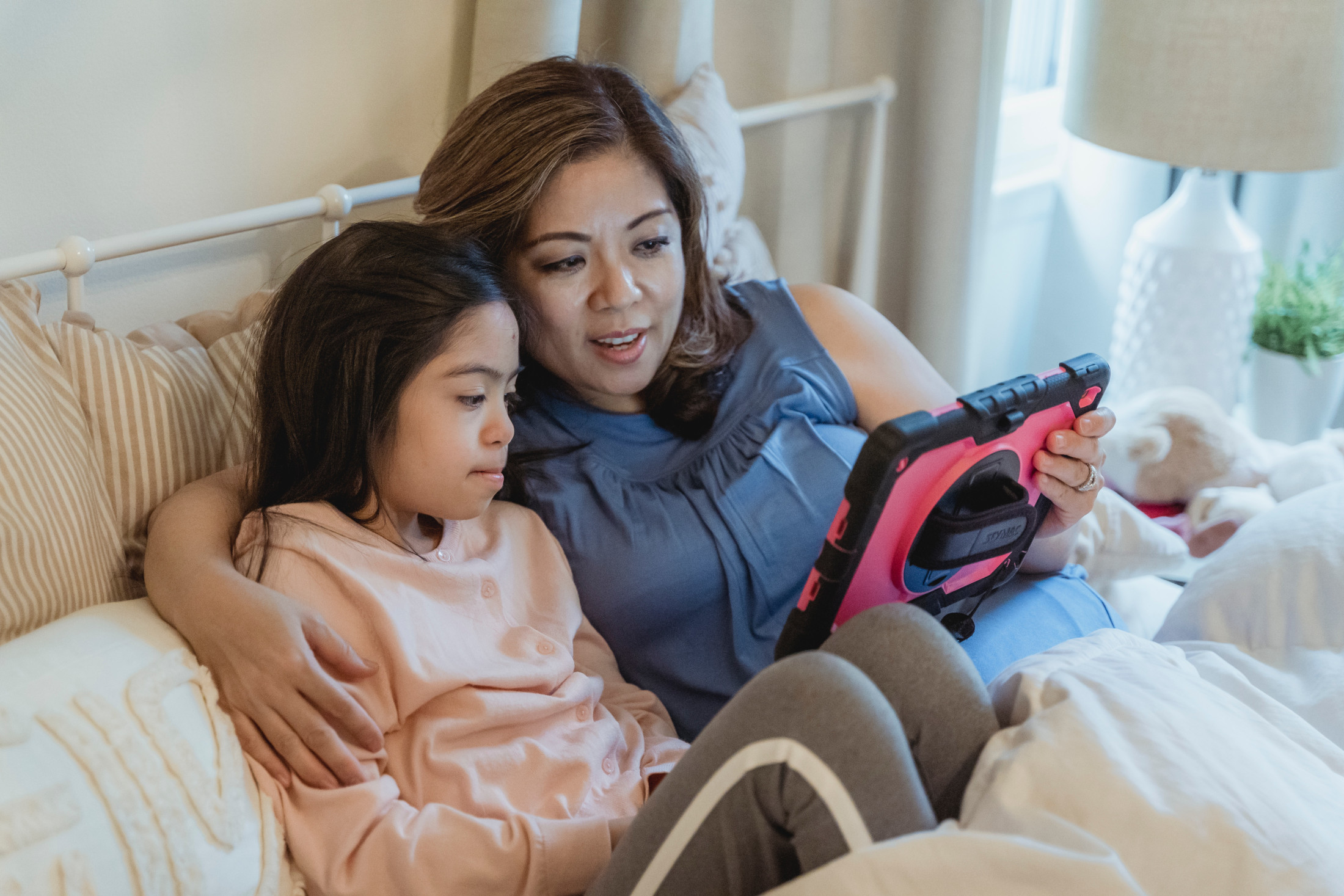Teaching Preschoolers with Down Syndrome Using AAC

What is the name of the article?
Teaching Preschoolers with Down Syndrome Using Augmentative and Alternative Communication Modeling During Small Group Dialogic Reading
What was the goal of this study?
To find out if children with Down Syndrome benefit when Speech Therapists involve them in the story using specific techniques.
What did we find?
Reading in small groups using dialogic reading and AAC helped preschool children with Down Syndrome engage in storytelling. For example, the therapist might read a page containing a target word while pressing the word on an iPad visible to the students. (“I see a red RADISH.”) The therapist would then pause and ask a question (“What is that?”), and wait for the child to answer. Then they would prompt the child to answer the question while pointing to the target word on the iPad. Next, the therapist would add one to two words to the child’s message. For example, if the child pressed the symbol for GROW, the therapist would exclaim, “The seeds grow!” and activate SEED and GROW.
What did we learn?
When therapists use AAC cues, children with Down Syndrome and their typically-developing peers increased their word use. Children showed that they had learned new words from the story several ways. They could say the word aloud, press a symbol on an iPad, or use a manual sign.
Why is this important?
Using AAC and dialogic reading together is a way to help children with Down Syndrome engage and communicate better with their teachers and peers. This improves both learning and social skills.
Who are the authors of the study?
Emily D. Quinn1, Ann P. Kaiser2, and Jennifer R. Ledford2
Authors are from: 1. Department of Pediatrics, Oregon Health & Science University, Portland, OR. 2. Department of Special Education, Vanderbilt University, Nashville, TN.
Quinn, E. D., Kaiser, A. P., & Ledford, J. R. (2019). Teaching preschoolers with Down syndrome using augmentative and alternative communication modeling during small group dialogic reading. American Journal of Speech-Language Pathology, 29(1), 80-100. https://doi.org/10.1044/2019_AJSLP-19-0017
Key Words:
Down Syndrome: A common disability that people can be born with that causes learning delays.
Augmentative and alternative communication (AAC): Communication methods, including non-verbal cues, used to support or replace speech or writing for people who have communication impairments.
Dialogic Reading: A teaching style that encourages children and adults to talk about a book while reading it
Who participated in the study?
| Participant | Age | Sex | Family income ($) | Race |
|---|---|---|---|---|
| Participant 1 | 5 years, 2 months | Male | 80,000–100,000 | White |
| Participant 2 | 4 years, 3 months | Male | > 100,000 | White |
| Participant 3 | 3 years, 1 month | Female | 80,000–100,000 | White |
| Participant 4 | 5 years, 3 months | Male | > 100,000 | White |
| Participant | Age | Sex | Race |
|---|---|---|---|
| Participant 1 | 4 years, 3 months | Male | White |
| Participant 2 | 5 years, 9 months | Female | White |
| Participant 3 | 4 years, 10 months | Female | White |
| Participant 4 | 3 years, 6 months | Male | White |
| Participant 5 | 3 years, 5 months | Male | White |
For more details about study participants, please see the full text article.